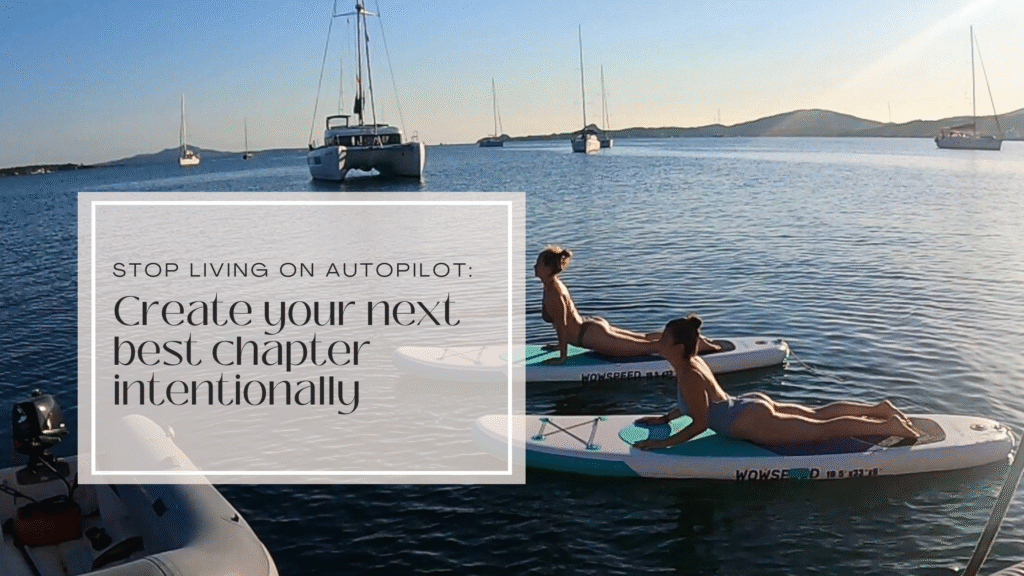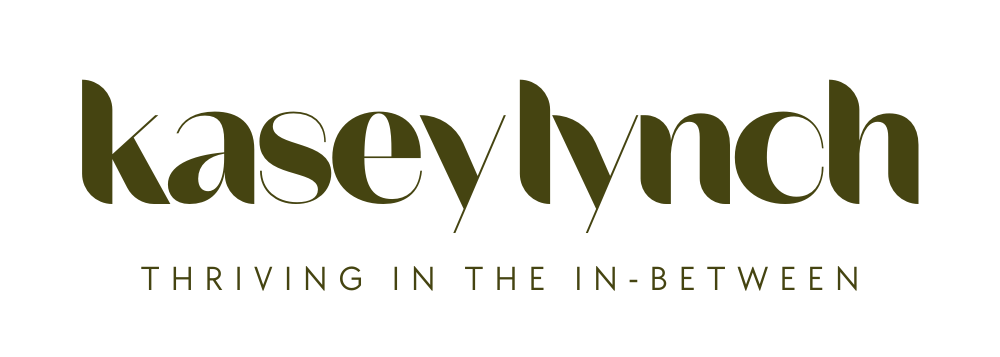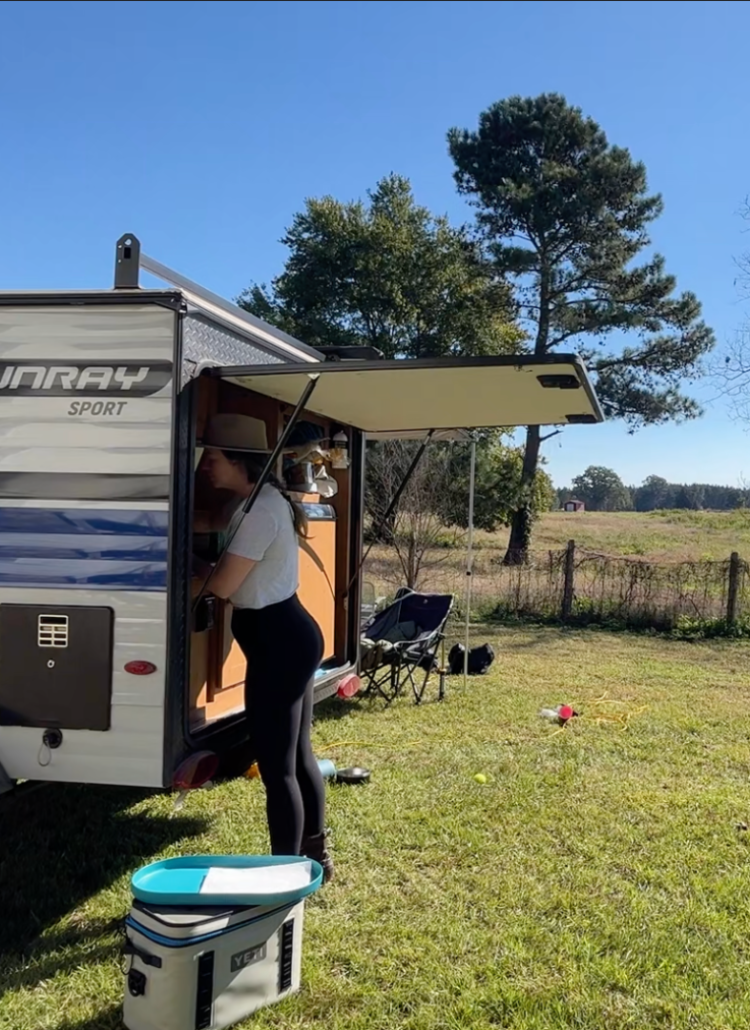
Ever feel like life is just happening to you, rather than you actively living it?
You wake up, go through the motions, tick off tasks, and suddenly the day, week, or even year has blurred into a routine you barely remember. That feeling, that sense of drifting, is what we call living on autopilot. It’s a common experience, a subtle yet powerful force that can leave you feeling disconnected, uninspired, and wondering if there’s more to life.
But what if you could take the controls back? What if you could infuse your days with purpose, excitement, and a profound sense of presence?
This guide is for anyone ready to break free from the monotony of habitual routines and embrace a life of intentionality.
We’ll explore why we slip into autopilot, how to recognize its signs, and most importantly, practical strategies to help you live more consciously, create meaningful experiences, and ultimately, design your next best chapter.
What’s On Deck:
- The Subtle Drift: Understanding Autopilot Mode
- Waking Up: Recognizing the Signs
- Taking the Controls: Strategies to Live with Intention
- Your Next Best Chapter Awaits
The Subtle Drift: Understanding Autopilot Mode
Before we can truly stop living on autopilot, it helps to understand what it is and why our brains gravitate towards it.
What Does “Living on Autopilot” Truly Mean?
At its core, living on autopilot means performing actions and navigating your day without conscious thought or full awareness. It’s the equivalent of driving a familiar route and arriving at your destination with no clear memory of the journey (you know the one where you question if the lights you drove through were green or red).
Your brain is incredibly efficient; it creates habits and routines to conserve energy. This “automaticity” allows you to do things like brush your teeth, make coffee, or commute without having to consciously think through every single step. It’s designed to run your physical body with as little required thought as possible, while actively preventing any potential dangers.
While efficiency is good, when this extends to larger parts of your life, you start to feel disconnected. You might go through the motions, respond to situations out of habit, or simply react to external stimuli rather than making thoughtful choices.
It’s a state where your mind might be elsewhere—dwelling on the past, worrying about the future, or scrolling through endless feeds—rather than being present in your own life right now. The experience feels like a subtle hum of unfulfillment, a sense that something vital is missing.
Why Do We Slip Into Autopilot?
Understanding the underlying reasons can help us develop strategies to change. Our brains are wired for efficiency, yes, but several other factors contribute to this default mode:
- Brain Efficiency: As mentioned, our brains like to conserve energy. When a task becomes routine, it moves from conscious processing to the brain’s “habit loops.” This is useful for simple, repetitive tasks, but it can lead to a general lack of engagement if not managed.
- Comfort and Predictability: Sticking to what we know feels safe. Stepping out of our comfort zone requires effort, invites uncertainty, and can feel vulnerable. Avoiding new experiences or challenging existing patterns keeps us in a predictable, albeit often unfulfilling, loop.
- Overwhelm and Stress: When life feels too chaotic, or we are under immense pressure, the brain can resort to autopilot as a coping mechanism. It’s a way to emotionally detach or numb ourselves from what feels overwhelming. While this might provide temporary relief, it prevents us from truly processing our emotions or finding sustainable solutions. This can lead to a general sense of fatigue and a lack of real excitement.
- Societal Conditioning: We often live in a culture that values busyness and productivity above all else. The constant rush, the pressure to “keep up,” and the endless stream of information can make pausing and reflecting feel like a luxury we can’t afford. This constant external pull can make it hard to hear our own inner voice or to live with intentionality.
- Lack of Intentionality: Sometimes, it’s simply a matter of not consciously choosing how to spend our time or what to focus on. If we don’t actively decide what we want our day or life to look like, the default — autopilot — often takes over.
Is Living on Autopilot Detrimental?
You might wonder, “Is living life on autopilot bad?” While automaticity has its place for mundane tasks, allowing your entire existence to run on default settings can be very detrimental. The dangers are often subtle but profound:
- Missed Opportunities: When you’re not present, you miss the small joys, unexpected connections, and spontaneous adventures that enrich life, leaving you feeling empty, lost, and miserable.
- Lack of Fulfillment: Life begins to feel hollow, even if you’re achieving external markers of success. The joy of the journey is lost, replaced by a feeling of emptiness, going through the motions, or a lack of control on your life’s trajectory.
- Emotional Numbness: You might find yourself disconnected from your emotions, unable to truly feel joy, sadness, or excitement. This can impact relationships and your ability to connect with others authentically. I lived in this category for way too long…
- Loss of Purpose: Without conscious reflection, it’s easy to lose sight of your values, dreams, and what truly inspires you. Your actions might stop aligning with your deeper purpose, leading to a sense of aimlessness with not idea how to get back to center.
- Stagnation: Personal growth requires awareness and effort. When you’re on autopilot, you’re not learning, adapting, or challenging yourself, which can lead to professional and personal stagnation.
Ultimately, living on autopilot means you’re not fully experiencing your own life. You’re watching it happen from the sidelines rather than being an active participant, and that can prevent you from truly designing your next best chapter.
Waking Up: Recognizing the Signs
The first step to stopping living on autopilot is to realize you’re doing it. It’s a journey of self-awareness. So, how do you know if you are operating on autopilot?
- Blurry Days: Do your days seem to blend into one another? Do you struggle to remember what you did yesterday, or even a few hours ago? This lack of recall is a strong indicator of low presence.
- Monotonous Routines: Your daily routine feels like a treadmill you can’t get off. There’s no excitement, no freshness, just the same repetitive actions. You might feel a dull sense of boredom or dissatisfaction.
- Disconnected Feelings: You might feel a general sense of emotional detachment, even from loved ones or activities you once enjoyed. You’re physically present but mentally elsewhere. You might struggle to identify how you truly feel about situations.
- Reactive Decisions: Instead of making conscious choices, you find yourself reacting to external demands or defaulting to old habits. Decision-making feels like a burden, or you simply avoid it.
- Constant Distraction: Your mind races, jumps from one thought to another, or constantly seeks external stimulation (phone, TV) to avoid being alone with your thoughts. You might struggle with focus and attention.
- “Going Through the Motions”: This phrase perfectly encapsulates the feeling. You’re doing the actions, but your heart and mind aren’t really in it. There’s no joy, no spark.
- Lack of Excitement for the Future: Your future vision feels vague or uninspiring. You don’t have new goals or dreams that genuinely excite you, or you feel too stuck to pursue them.
- Overwhelm by Small Changes: Even minor deviations from your routine feel incredibly disruptive or stressful, indicating a rigid reliance on autopilot.
If any of these resonate, take heart. Realizing you’re in autopilot mode is the crucial first step! It’s an invitation to pause, reflect, and begin creating a more vibrant, intentional existence. You are not lost or broken, you’re disconnected.
Taking the Controls: Strategies to Live with Intention
Now for the good part: the actionable strategies to shift from merely existing to truly living. This isn’t about perfection; it’s about conscious effort, small changes, and a recommitment to your own life. You’re the main character, and it’s time to put you back in the driver’s seat.
Step One: Cultivate Radical Self-Awareness
Before you can change your path, you need to know where you are and where you want to go. Self-awareness is the bedrock of intentional living.
Related: Creating an Intentional Life — One Small Decision at a Time
Pause and Observe Your Thinking
One of the core aspects of autopilot is the automatic nature of our thoughts. We often get caught in cycles of overthinking or negative self-talk without even realizing it. To stop thinking on autopilot, you need to become the observer of your own mind.
- Practice Mindfulness: Mindfulness is simply paying attention to the present moment without judgment. This isn’t about emptying your mind, but noticing what’s happening. Start with just a few minutes a day.
- Mindful Breathing: Sit comfortably, close your eyes, and just notice your breath. Feel the air enter and leave your body. When your mind wanders (and it will!), gently bring it back to your breath. I find that repeating “breathe in, breathe out” helps drive a stronger sense of presence versus letting my mind wander without a task as an anchor point.
- Body Scan: Lie down and systematically bring your attention to different parts of your body, noticing any sensations without trying to change them. What do your toes feel like? What does your chest feel like? How about your head?
- Journaling: Dedicate 5-10 minutes each day to writing down your thoughts and feelings. There’s no right or wrong way to do it. Just let the words flow. I call this word vomiting! This helps you notice patterns, identify recurring emotions, and gain clarity on what’s truly going on in your mind. Ask yourself: “How do I feel right now?” “What thoughts are dominant?” Journalling is a reliable way to put your mind in the backseat, and let your subconscious highlight what’s going on behind the scenes.
- Emotional Check-ins: Throughout your day, pause briefly and ask yourself, “What emotion am I feeling right now?” and “Where do I feel this in my body?” Simply acknowledging your emotions, rather than suppressing or ignoring them, builds greater emotional awareness. Ignoring them only makes them louder and more intrusive at the worst times, trust me.
Related: Self-Reflection Journal Prompts for Personal Growth and Self-Discovery
Understand Your Values and Vision
Autopilot thrives when we don’t have a clear internal compass. To live with purpose, you need to know what truly matters to you.
- Identify Your Core Values: What principles guide your life? Is it adventure, creativity, connection, freedom, growth, service, security? Make a list of 3-5 core values. These are the anchors for your decisions.
- Envision Your Next Best Chapter: If you weren’t on autopilot, what would your life look like? What experiences would you seek? What kind of person would you be? This isn’t about a rigid plan, but a guiding vision. Create a vision board, write a letter to your future self, or simply spend time imagining. This helps inspire you and pull you forward.
- Align Actions with Values: Once you know your values, assess your daily activities. Are they aligned? If “adventure” is a core value, but your days are spent entirely indoors, that misalignment can contribute to the autopilot feeling. Consciously making decisions that honor your values is key.
Step Two: Embrace Mindful Living in Daily Routines
The key to breaking the “mindless” cycle is to infuse awareness into the everyday. You don’t need grand gestures; small, consistent shifts create profound change.
Transform Mundane Moments
- Mindful Eating: Instead of rushing through meals while distracted, truly taste your food. Notice the colors, textures, and aromas. Chew slowly, savoring each bite. This simple practice grounds you in the present moment. I recommend enjoying your meals without scrolling on your phone or watching TV.
- Mindful Movement: Whether you’re walking, stretching, or doing chores, bring your full attention to your body. Feel your feet on the ground, the air on your skin, the movement of your muscles. If you’re able, take your exercise outdoors and connect with nature – feel the sun, the wind, the earth beneath your feet.
- Mindful Routines: Turn a routine like showering or making coffee into a mini-meditation. Notice the warmth of the water, the scent of the coffee, the sound of the brewing. Engage all your senses.
Mindfulness is simply doing an activity with an intention. When you do this, it turns any activity into a moving meditation, helping clear the cobwebs off the neuro-pathways that have been waiting to be turned on to help guide you to a more fulfilling life.
Digital Detox and Intentional Connection
Our devices are often the biggest enablers of autopilot, constantly pulling our attention away from the present.
- Schedule Tech-Free Times: Designate specific periods each day or week where you put your phone away, turn off notifications, and disconnect from screens. Use this time to engage with your surroundings, read a book, or simply be.
- Connect with Nature: Spend time outdoors, even if it’s just a short walk in a local park. Notice the trees, the sky, the sounds of birds. Connecting with the natural world is a powerful way to ground yourself and feel more alive and present. This aligns perfectly with an adventure, wellness, and lifestyle approach to life.
- Practice Intentional Conversations: When you’re with friends or family, put your phone away. Practice active listening, make eye contact, and truly engage in the conversation. Be fully present for the people you are with.
Step Three: Break Free from Habitual Patterns
Autopilot thrives on predictability. Introducing novelty and consciously changing your routine can literally rewire your brain to be more attentive.
Introduce Novelty and Adventure
- Change Small Routines: Take a different route to work or the grocery store. Try a new coffee shop. Brush your teeth with your non-dominant hand. These small shifts force your brain to engage rather than operate automatically.
- Try New Experiences: Sign up for a class, try a new restaurant, visit a museum you’ve never been to, or explore a new part of your city or local area. Even a small adventure like hiking a new trail or trying a new recipe can jolt you out of autopilot. This is about gently expanding your comfort zone.
- Embrace Spontaneity: Allow for unplanned moments. Say “yes” to an unexpected invitation (if it feels right). Leave room in your schedule for serendipity.
Conscious Decision-Making
A core part of stopping autopilot is reclaiming your power in decision-making.
- Pause Before Reacting: When faced with a choice, especially an emotional one, resist the urge to react immediately. Take a deep breath, count to ten, and create a space between the stimulus and your response. You can also use the 24-hour rule! If something is still bothering you after 24-hours, then bring it up again for resolution. If it’s not, then let it go and recognize that you gave yourself space to make a decision aligned with your values and not just your emotions.
- Ask “Why?”: Before making a decision or taking an action, ask yourself, “Why am I doing this?” Is it out of habit, obligation, or genuine desire? This simple question can illuminate unconscious patterns. Asking “why” to everything is the best way to get to the root causes of your impulses, self-sabotaging tendencies, and everything else for that matter. Ask “why” until you recognize the truth.
- Visualize Outcomes: For important decisions, take time to visualize the potential outcomes of different choices. How would each option feel? What are the long-term implications? This helps you make more informed and intentional choices, rather than defaulting. Recommit to the choices you make with full awareness.
Related: 6 Practical Exercises to Strengthen and Unlock Your Intuition
Step Four: Reconnect with Your Inner Compass
Moving beyond autopilot means designing a life that truly resonates with you, not just following what you feel you “should” do.
Set Intentional Goals (Not Just Tasks)
- Goals Aligned with Values: Instead of setting generic goals (e.g., “get fit”), set goals that connect to your core values and vision for your next best chapter (e.g., “embrace adventure by planning a hiking trip” or “cultivate well-being by prioritizing sleep and daily movement”).
- Small, Actionable Steps: Big goals can be overwhelming. Break them down into tiny, manageable steps. Celebrate each small victory to build momentum and inspire further action.
- Focus on the “Why”: Continuously remind yourself why these goals matter to you. This intrinsic motivation is far more powerful than external pressure and helps you stay present in the pursuit.
Prioritize Well-being and Self-Care
When you are well-rested, nourished, and physically active, your brain is less likely to slip into autopilot. Your ability to think clearly, feel deeply, and make conscious choices improves dramatically.
- Quality Sleep: Make sleep a non-negotiable priority. A tired brain defaults more easily. Create a consistent sleep routine.
- Nourish Your Body: Pay attention to what you eat and how it makes you feel. Fuel your body with nutritious foods that support your energy levels and mental clarity.
- Movement and Exercise: Regular physical activity, especially outdoors, is incredibly beneficial for mental and emotional well-being. It helps release stagnant energy and brings you back into your body, reducing the tendency to live in your head. Incorporate walks, hikes, or yoga into your routine to connect mind and body.
- Boundaries and Saying “No”: Learn to say no to commitments that don’t align with your values or that drain your energy. Protecting your time and energy is a powerful act of self-care and intentional living.
Step Five: Cultivate a Growth Mindset and Resilience
The journey to stop living on autopilot is ongoing. There will be days you slip back. That’s okay. What matters is how you respond.
Embrace Imperfection and Learn from Setbacks
- Life is a Journey: Understand that breaking autopilot is not a one-time fix but a continuous process. You will have moments when you feel yourself slipping back into old patterns. That’s part of being human.
- View Challenges as Lessons: Instead of getting discouraged by setbacks, view them as opportunities to learn and adjust. What did this moment teach you? How can you approach it differently next time? Every experience, good or challenging, is a chance to grow.
- Practice Self-Compassion: Be kind to yourself. You wouldn’t chastise a friend for making a mistake; extend that same understanding to yourself.
Seek Support and Inspiration
- Connect with Like-Minded People: Share your aspirations with friends or family who encourage conscious living. Being part of a supportive community can provide motivation and new perspectives.
- Read and Listen: Immerse yourself in books, podcasts, and articles that inspire intentional living, personal growth, and adventure. Many resources exist, including valuable self-help books, that can offer fresh insights.
- Consider a Mentor or Coach: Sometimes, an outside perspective can be incredibly helpful. A coach or mentor can provide guidance, accountability, and strategies tailored to your unique situation.
Your Next Best Chapter Awaits
Stopping living on autopilot isn’t about radically overhauling your entire life overnight.
It’s about a series of small, intentional shifts that, over time, build into a profoundly more fulfilling existence. It’s about deciding that your life won’t just happen to you anymore. You will live it, consciously, purposefully, and with a sense of adventure.
Remember, the power to change is within you. Start small. Choose one strategy from this guide that resonates most, and commit to practicing it for a week. Notice the subtle shifts, the moments of increased presence, the sparks of inspiration.
Your next best chapter is waiting to be written. It’s filled with conscious choices, meaningful experiences, and a deep connection to your true self and the world around you.
Are you ready to take the controls and start living it?
The journey begins now.





Leave a Reply